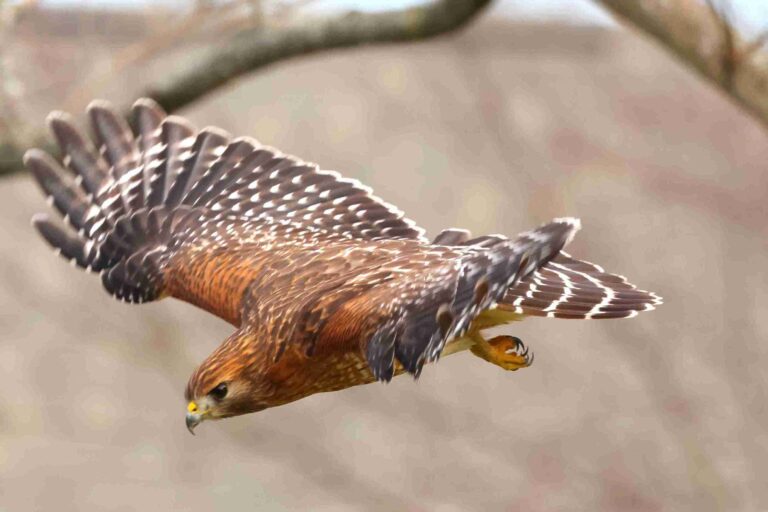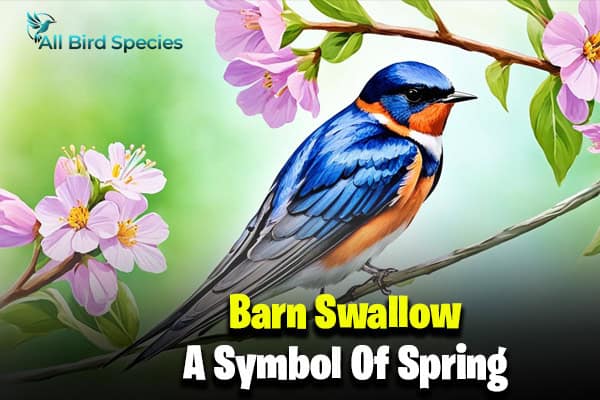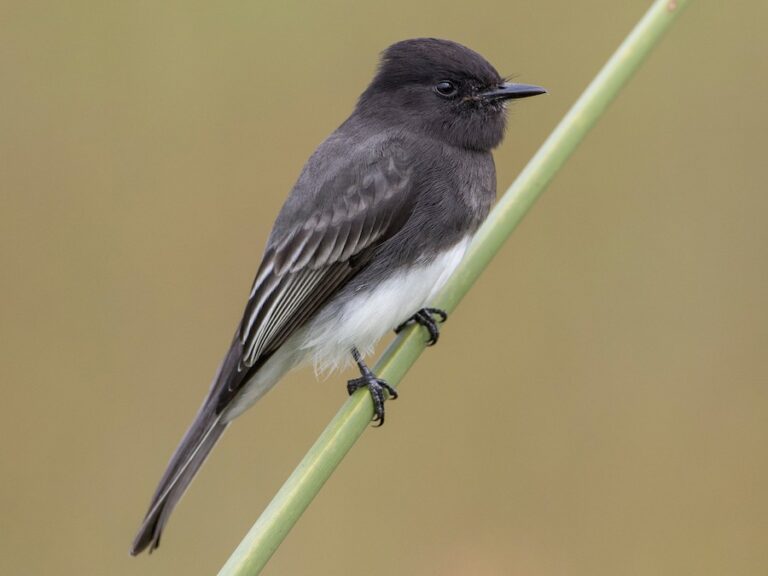15 Species of Black and White Birds You Must See (With Photos)
Have you ever thought about why some birds in North America are overlooked because of their black and white feathers? These birds are more than just a pretty sight. They have interesting behaviors and stories that birdwatchers should know. Let’s dive into the world of black and white birds and learn about their significance and charm.
We’ll explore the unique traits that make them special in the world of wildlife observation. You’ll see why these birds are not just a treat for the eyes but also fascinating creatures.
Let’s go on a journey with 20 captivating species. They will make your birdwatching adventures more exciting and help you see the beauty in these amazing birds!
Introduction to Black and White Birds
Black and white birds grab the attention of bird lovers across North America. Their striking colors make them stand out in different places, like woods and wetlands. These birds show a wide range of beauty, behavior, and ways to adapt.
Starting your birdwatching journey, finding these black and white birds is exciting. You might see some well-known species, each with its traits. Knowing where these birds live helps you see them in their natural setting.
- Prominent Members: Look for species like the Black-capped Chickadee or the American Coot.
- Diverse Habitats: These birds live in cities, forests, and by the coast.
- Unique Adaptations: Some have special ways to find food, while others show interesting courtship dances.
This introduction prepares you for a closer look at certain species you might meet. Whether you’re experienced or new to birdwatching, exploring black and white birds is a rewarding adventure.
Understanding the Importance of Black and White Birds
Black and white birds play a big role in nature. They help control pests by eating insects and other unwanted creatures. This keeps farms and gardens healthy. They also help plants grow by spreading seeds, which is key for a diverse ecosystem.
Efforts to save these birds also protect their homes in nature. Learning about their role in nature can motivate us to help them. Every bird, including black and white ones, is important in the world of nature.
Appreciating these birds can make a big difference in saving wildlife. By seeing how important they are, people can do more to protect them. Knowing about black and white birds helps us keep nature in balance for all living things.
Where to Spot Black and White Birds in North America
Exploring different habitats is key to finding black and white birds in North America. Each place has its own species, so knowing where to look is helpful. Here are some top spots for birdwatchers:
- Forests: Dense woods are great for seeing birds like the Black-and-White Warbler. These forests have lots of hiding spots, making them perfect for birdwatching.
- Wetlands: Marshes and swamps are alive with birds. Look for the American Bittern and other black and white birds in these rich habitats.
- Urban Areas: City parks and gardens can be great for birdwatching too. The Carolina Chickadee often visits these places, adapting well to human environments.
Some top places for birdwatching include:
| Location | Habitat Type | Species to Spot |
|---|---|---|
| Everglades National Park, Florida | Wetlands | Black-billed Cuckoo |
| Redwood National and State Parks, California | Forests | Black-and-White Warbler |
| Central Park, New York | Urban Area | Carolina Chickadee |
By visiting these places, you’ll have a better chance of seeing black and white birds. You’ll also enjoy the beauty of North America’s diverse nature.
1. Black-and-White Warbler
The Black-and-White Warbler, scientifically known as Mniotilta varia, is a fascinating bird in the Parulidae family. It’s a common sight in North America, known for its eye-catching look and interesting behaviors.
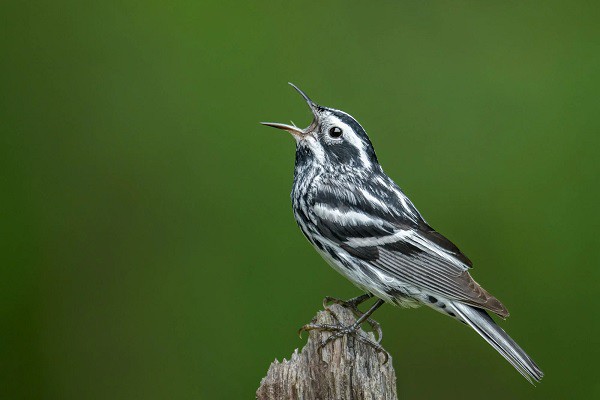
Scientific Classification and Features
This bird is classified in the Passeriformes order. It’s about 5.5 to 6 inches long and has black and white stripes. These stripes help it blend into the woods, showing how it has adapted over time.
Habitat and Behavior
You’ll often see the Black-and-White Warbler in wooded areas in the eastern United States. They have unique ways of finding food, like climbing trees. This shows how well they’ve adapted to living in trees. They’re found in many places in North America, making them fun to watch.
2. Carolina Chickadee
The Carolina Chickadee is a joy to watch, especially for birdwatchers. Its cute looks and fun behavior brighten up your backyard. Learning about its looks and eating habits makes watching these birds more exciting.
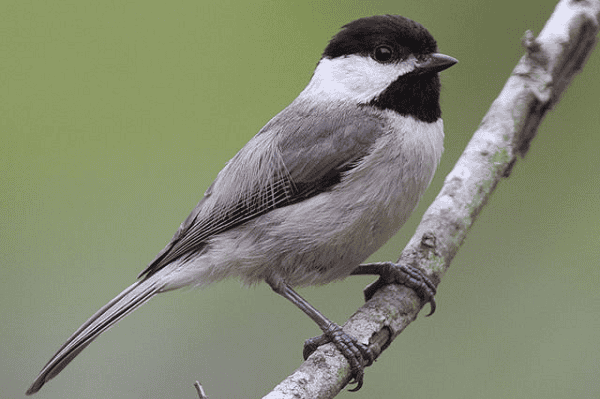
Appearance and Size
The Carolina Chickadee is about 5 to 6 inches long. It has a unique look with a black cap and white cheeks. Its gray body matches well with tree bark and leaves, making it both pretty and hidden in nature.
Diet and Feeding Habits
Carolina Chickadees love eating insects and seeds. They search for food in trees and bushes. At feeders, they’re a favorite among bird feeders. Offering high-quality seeds will draw them in and make birdwatching more fun all year.
3. White-Breasted Nuthatch
The White-Breasted Nuthatch is a delightful bird found in North American woodlands. It stands out with its unique identification features. Birdwatchers love it for its charming characteristics.
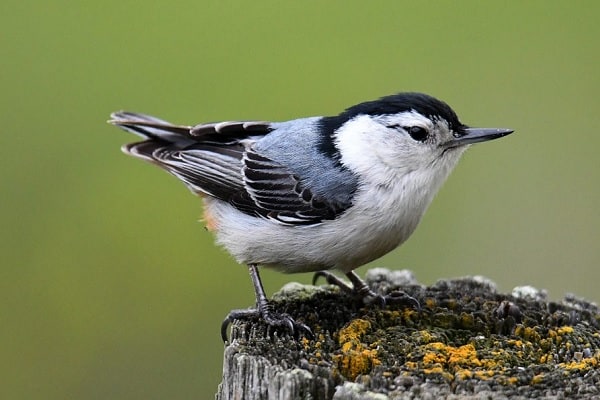
Identification and Characteristics
Spot the White-Breasted Nuthatch by its eye-catching look. It sports a white breast and a black cap. It’s about 5.1 to 5.5 inches long, making it a small but noticeable bird.
Its bold, stocky shape and short tail make it stand out. These bird characteristics add to its charm.
Preferred Habitat
The White-Breasted Nuthatch loves deciduous forests for foraging. You’ll see it hanging upside down on trees, looking for insects and seeds. Keep an eye out for this agile bird in diverse and structured forests.
4. Downy Woodpecker
The Downy and Hairy Woodpeckers may look alike at first, but they have clear differences. Knowing their unique traits and how they eat makes bird identification easier.

Differences Between the Two Species
The main difference between the Downy and Hairy Woodpeckers is their size. The Downy is about 6 to 7 inches long. The Hairy Woodpecker is bigger, measuring 7 to 10 inches. This size difference helps tell them apart when birdwatching.
5. Hairy Woodpecker
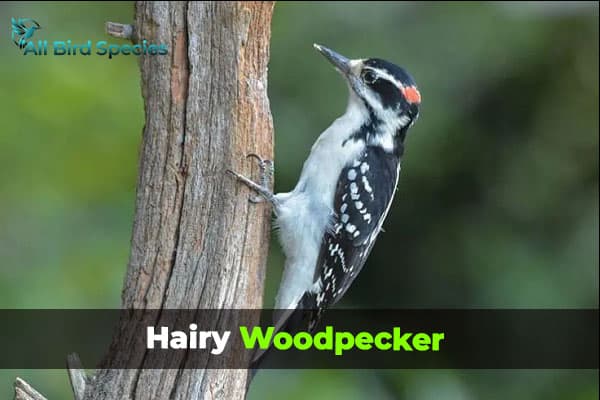
Feeding Preferences
Both woodpeckers are great at finding food by pecking on tree bark. They look for insects and larvae. The Downy Woodpecker has a short bill, perfect for finding small insects. The Hairy Woodpecker has a longer bill, which lets it reach deeper into the bark for bigger food.
6. Rose-Breasted Grosbeak
The Rose-Breasted Grosbeak is a must-see for bird lovers. Its bright colors and unique look stand out. You’ll love the bird’s special feathers, especially during migration when they’re easy to spot.

Unique Plumage
The male Rose-Breasted Grosbeak has striking black and white feathers with a rose-colored breast. This look makes it easy to recognize and adds excitement to birdwatching. The female is less colorful but still has beautiful brown and white patterns.
Best Times to See Them
Spring migration in May is the best time to see the Rose-Breasted Grosbeak. They often visit eastern woodlands and gardens to eat before moving on. Knowing when they migrate can make birdwatching more rewarding, as it increases your chances of seeing these lovely birds.
7. Black-Billed Cuckoo
The Black-billed Cuckoo (Coccyzus erythropthalmus) is a bird that catches the eye of many bird lovers. It’s known for its unique sounds and how it moves. This bird is hard to spot, but its calls can be heard in the trees.
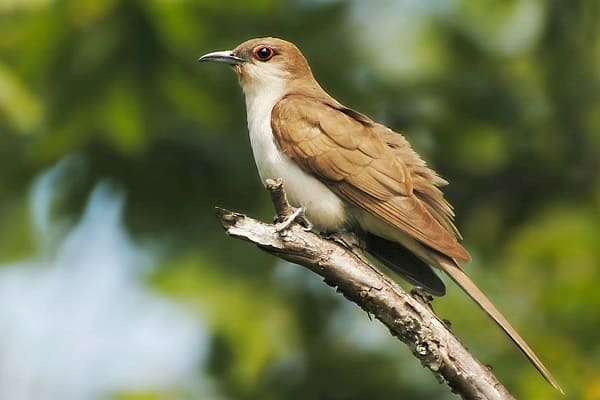
Vocalizations and Calls
The Black-Billed Cuckoo makes smooth, cooing sounds. These calls are calming and enchanting. They help the birds talk to each other during breeding or migration.
Listening to these calls can be a treat. The way they change in tone and frequency adds to their beauty.
Migration Patterns
In late summer to early fall, the Black-Billed Cuckoo starts its migration. They head south to find warmer places for the winter. Birdwatchers look forward to seeing these birds come and go each year.
8. Black Skimmer
The Black Skimmer (Rhynchos minuta) is a standout among coastal birds. It has a sleek black upper body, a sharp white belly, and a long, red-orange bill. This makes it a captivating sight for birdwatchers.

These birds are often found along coastlines. They have a unique feeding behavior. They glide just above the water, their lower mandibles cutting through to catch small fish.
Here are some top spots to see Black Skimmers:
- Shallow coastal bays
- Wide sandy beaches
- Estuaries with calm waters
- Wetlands near the ocean
Knowing where they live can help you see their hunting technique. Black Skimmers are not just beautiful; they also help control fish populations in coastal areas.
| Characteristic | Description |
|---|---|
| Coloration | Black upper body and white underbelly |
| Bill Type | Long, red-orange bill |
| Feeding Method | Skims water surface while flying |
| Habitat | Coastal areas, beaches, and wetlands |
| Best Time for Birdwatching | Early morning or late afternoon |
9. Black Phoebe
The Black Phoebe is a fascinating bird known for its amazing hunting skills and unique behavior. It lives near streams and in cities, showing great skill and precision in catching insects. Watching these birds is a treat as they move through their world with ease.

Feeding Techniques of the Black Phoebe
The way the Black Phoebe hunts is truly captivating. These birds prefer to perch low, scanning their area for food. When they see prey, they quickly fly out to catch it in mid-air. This method shows their speed and agility and helps keep insect numbers in check.
| Aspect | Description |
|---|---|
| Habitat | Found near water bodies and urban settings |
| Perching Behavior | Often perches on low branches or fences |
| Hunting Style | Darts out for mid-air insect catches |
| Insect Preference | Flies, beetles, and other small insects |
| Observation Tips | Look for them around the water and listen for their calls |
Watching the Black Phoebe hunt is not only interesting but also important for the environment. It helps control insect populations, keeping the ecosystem balanced. Their active nature makes birdwatching more exciting.
10. Black-Necked Stilt
The Black-Necked Stilt is a unique shorebird known for its striking black-and-white look. It has long, elegant legs. This bird builds nests in shallow wetlands for breeding. These places give enough food and shelter for the adults and their young.
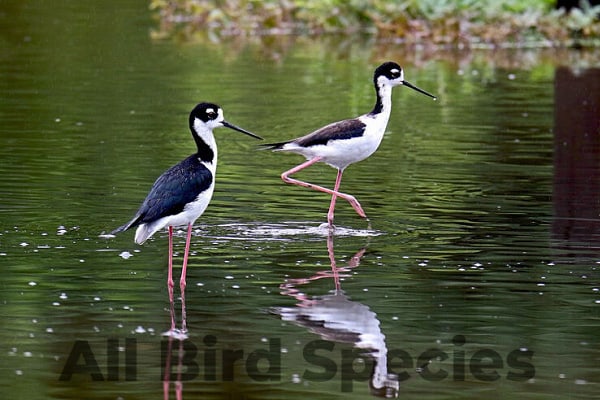
Breeding Behavior and Nesting
When it’s time to breed, the Black-Necked Stilt performs special flying and calling routines. These actions help attract a mate. Once they find a partner, they pick a spot with shallow water and plants for nesting.
- Nesting sites typically include mudflats, salt pans, and flooded fields.
- Each nest consists of a simple scrape in the ground lined with small pebbles and vegetation.
- These shorebirds may return to the same nesting site in successive years.
Both parents take turns incubating the eggs. This teamwork helps increase the chances of the young ones surviving. It’s key for the species to thrive in its environment.
11. Mute Swan
The Mute Swan is known for its beautiful white feathers and a special black knob on its bill. It’s a favorite among birdwatchers. These swans move smoothly over water, making their homes in many aquatic places.

They like calm waters like lakes, ponds, and slow rivers. These places give them food and places to nest. In North America, they’re becoming more common in cities, living in both wild and man-made wetlands.
They eat mostly plants from the water, which helps keep their homes healthy. By eating plants, they stop them from taking over and help many other species live there.
Seeing Mute Swans in the wild is amazing. You might see how they show love during courtship or how they care for their young. Watching these swans makes birdwatching more exciting.
| Characteristic | Description |
|---|---|
| Scientific Name | Cygnus olor |
| Plumage Color | White with black knob |
| Habitat | Lakes, ponds, rivers |
| Diet | Aquatic vegetation |
| Behavior | Graceful swimming, social nesting |
12. Royal Tern
The Royal Tern, known as Thalasseus maximus, is a fascinating bird often found in large groups near the coast. They play a key role in their social life and nesting habits by flocking together. This behavior helps them survive and build a strong community.
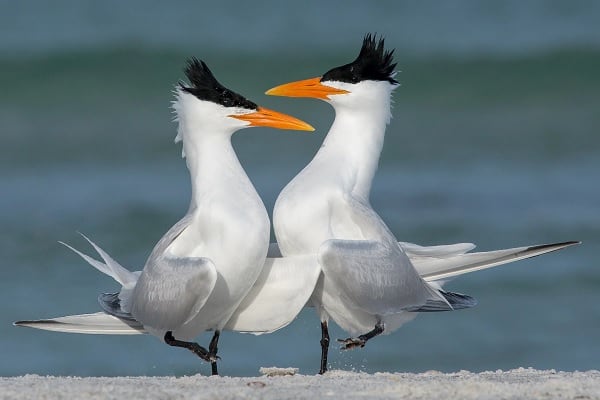
Colony Behavior
Royal Terns show amazing colony behavior, especially when they nest. They gather in big groups to find the best places to nest on sandy shores. These spots must have enough space and protection for them.
Being together in large numbers helps them in many ways, such as:
- Enhanced predator detection
- Improved foraging efficiency
- Strengthened bonding among peers
Watching Royal Tern colonies shows how these birds communicate and work together. It gives us a peek into nature’s complex design in coastal areas. Their social life not only supports healthy nesting but also makes them feel like they belong in their flock.
13. American Oystercatcher
The American Oystercatcher is a coastal bird known for its black-and-white look and bright orange bill. You can see it on sandy shores, mudflats, and estuaries. It lives in many different places.

This bird loves to eat mollusks like clams and oysters. It uses its strong bill to open shells. Watching it eat is interesting, as it shows off its skills.
The American Oystercatcher builds its nest on open beaches or in gravelly spots. The young birds are quite grown and can move around soon after they hatch. This helps them avoid predators and find a safe place to live.
Learning about the American Oystercatcher’s habits and where it lives shows why we need to protect these areas. This way, we can make sure these amazing birds can keep living in the wild for a long time.
| Feature | Description |
|---|---|
| Plumage | Black and white with a bright orange bill |
| Feeding Habits | Primarily feeds on mollusks, using its bill to open shells |
| Nesting Sites | Prefers open beaches and gravelly areas for nesting |
| Chick Development | Chicks are precocial and mobile shortly after hatching |
14. Snow Goose
The Snow Goose is a bird that stands out with its unique look and interesting ways during migrations. Watching these beautiful birds in their winter homes is a special chance for bird lovers. They can be found in many places in North America, escaping the cold winter.
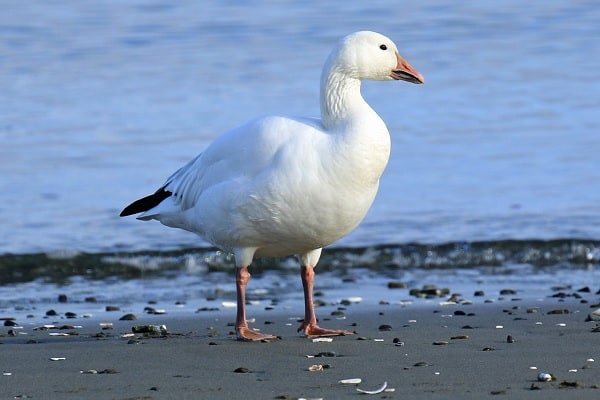
Wintering Habitats
In the winter, Snow Geese move to places with lots of food and shelter. Their favorite spots include:
- Wetlands: These areas have important food like aquatic plants and small animals.
- Agricultural Fields: After harvest, these fields are great because they have leftover grains and nutrients.
- Coastal Regions: Some Snow Geese like the coastlines for food and safety from predators.
Seeing Snow Geese in the sky or on the ground is thrilling for birdwatchers. Their big groups, migrations, and sounds make watching them unforgettable. Look for these birds in their winter spots for a wildlife adventure you won’t forget.
15. Wood Stork
The Wood Stork is a big and eye-catching bird. It is known for its unique ways of finding food and making nests. These behaviors show how important the Wood Stork is in wetlands.
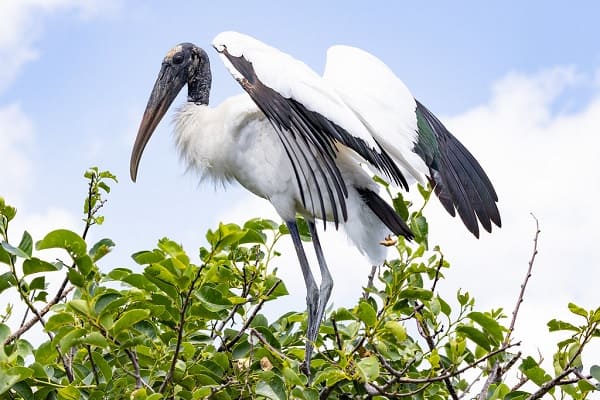
Feeding and Breeding Habits
Wood Storks mainly eat fish and other small animals. They have special ways of hunting in shallow water. They use their long bills to feel for fish in the murky water.
They breed in large groups in trees near water. This happens when there is plenty of food around. Being together helps them raise their young better.
| Aspect | Details |
|---|---|
| Primary Diet | Fish, amphibians, invertebrates |
| Foraging Technique | Tactile feeding in shallow waters |
| Nesting Behavior | Colonial breeding in treed areas |
| Habitat Preference | Wetlands, marshes, and shallow lakes |
Final Thoughts:
As we wrap up our look at black and white birds, it’s clear they’re a big deal in North America’s wildlife. Their striking looks are not just pretty to see. They also show how diverse our ecosystems are. From the Black-billed Cuckoo’s sweet songs to the Rose-Breasted Grosbeak’s bold colors, each bird adds something special to nature’s show.


